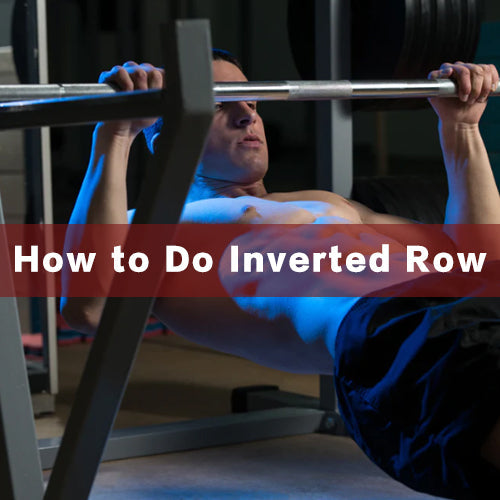
A well-developed back not only enhances your overall physique but also plays a crucial role in maintaining good posture, supporting the spine, and preventing injury. Dumbbell back exercises provide an effective way to target and strengthen the various muscles of the back. Whether you're a fitness enthusiast looking to build muscle or a beginner seeking to improve back health, incorporating dumbbell exercises into your routine can yield remarkable results. In this comprehensive guide, we'll delve into a range of dumbbell back exercises that cater to different muscle groups within the back, helping you achieve a strong and sculpted upper body.
The 19 Best Dumbbell Back Exercises are:
- Dumbbell Rows
- Dumbbell Deadlifts
- Dumbbell Shrugs
- Dumbbell Pullovers
- Dumbbell Renegade Rows
- Dumbbell Bent-Over Rows
- Dumbbell Rear Delt Raises
- Dumbbell Single-Arm Rows
- Reverse Dumbbell Fly
- Dumbbell Upright Rows
- Dumbbell Hyperextensions
- Dumbbell Renegade Rows with Push-Ups
- One Arm Dumbbell Pullover
- Dumbbell T Raises
- Dumbbell Y Raises
- Dumbbell Prone Rows
- Lawnmower Rows
- Dumbbell High Pull
- Dumbbell Good Mornings
Back Muscles

The back muscles, also known as the dorsal muscles, play a crucial role in supporting posture, stability, and movement of the upper body. These muscles are divided into several key groups:
Latissimus Dorsi (Lats): The lats are the largest muscles in the back and give the V-shaped appearance to the upper body. They extend from the upper arm bone to the lower spine and are responsible for movements like pulling, lifting, and rotating the arms.
Trapezius: The trapezius is a large diamond-shaped muscle that covers the upper back and neck. It assists in movements such as shrugging the shoulders, tilting the head, and rotating the shoulder blades.
Rhomboids: The rhomboids are located between the shoulder blades and help retract and stabilize the scapulae (shoulder blades). They assist in various pulling movements and contribute to good posture.
Erector Spinae: These muscles run along the length of the spine and help maintain an upright posture. They are essential for extending the back and bending backward.
Spinalis, Longissimus, and Iliocostalis: These three muscle groups make up the erector spinae and support the spine's structure and movement.
Infraspinatus and Teres Major: These muscles are involved in stabilizing and rotating the shoulder joint, contributing to movements such as pulling and lifting.
Levator Scapulae: Located at the sides and back of the neck, the levator scapulae are responsible for elevating the scapulae (shoulder blades) and assisting in neck movements.
Serratus Posterior: These muscles are located on either side of the spine and help with breathing and rib cage movement.
Semispinalis: These muscles run along the length of the spine and assist in extending and rotating the vertebral column.
Quadratus Lumborum: Situated in the lower back, these muscles stabilize the spine and are involved in lateral flexion and extension.
After understanding the back muscles, start dumb back exercises next!
19 Best Dumbbell Back Exercises For You
1.Dumbbell Rows

Dumbbell rows are a classic exercise that primarily targets the latissimus dorsi, the large muscles of the upper back. To perform this exercise:
- Place one knee and one hand on a weight bench for support.
- Hold a dumbbell in your free hand with your palm facing your body.
- Allow the dumbbell to hang straight down, then pull it towards your hip by retracting your shoulder blade.
- Lower the dumbbell back to the starting position and repeat.
2.Dumbbell Deadlifts

Deadlifts with dumbbells are excellent for targeting the lower back muscles and the erector spinae. Follow these steps:
- Hold a dumbbell in each hand in front of your thighs.
- Hinge at your hips while slightly bending your knees and lower the dumbbells toward the ground.
- Keep your back straight and core engaged.
- Stand back up by pushing through your heels and returning to the starting position.
3.Dumbbell Shrugs

- Dumbbell shrugs effectively work the trapezius muscles, which run from your neck to your upper back. Here's how to perform them:
- Hold a dumbbell in each hand by your sides.
- Shrug your shoulders upward while keeping your arms straight.
- Squeeze your shoulder blades at the top of the movement, then lower the dumbbells back down.
4.Dumbbell Pullovers

Dumbbell pullovers target the lats and also engage the chest and triceps. To execute this exercise:
- Lie flat on a bench with your head at the edge and your feet planted firmly on the ground.
- Hold a dumbbell with both hands above your chest.
- Lower the dumbbell behind your head in an arc-like motion while keeping your elbows slightly bent.
- Pull the dumbbell back up to the starting position.
5.Dumbbell Renegade Rows

- This exercise engages both the back muscles and the core for added stability.
- Begin in a push-up position while holding a dumbbell in each hand.
- Row one dumbbell towards your hip while balancing on the other hand and feet.
- Alternate sides for each repetition.
6.Dumbbell Bent-Over Rows

- Bent-over rows are a compound exercise targeting the entire back area.
- Hold a dumbbell in each hand and hinge at your hips to bend forward.
- Keep your back straight and pull the dumbbells towards your hips.
- Lower the dumbbells back down to complete one repetition.
7.Dumbbell Rear Delt Raises

These are essential for targeting the rear deltoids, which are often overlooked.
- Stand with a dumbbell in each hand and slightly bend your knees.
- Lean forward at your hips and raise the dumbbells out to the sides.
- Focus on squeezing your rear deltoids, then lower the dumbbells back down.
8.Dumbbell Single-Arm Rows

This exercise hones in on each side of the back individually, helping to address imbalances.
- Place one knee and one hand on a bench and hold a dumbbell in your free hand.
- Pull the dumbbell towards your hip, focusing on engaging the lats.
- Lower the dumbbell back down and repeat on the other side.
9.Reverse Dumbbell Fly

Reverse fly target the rear deltoids and improve posture by countering the effects of forward-leaning activities.
- Stand with a dumbbell in each hand, palms facing each other.
- Slightly bend your knees and lean forward at your hips.
- Raise the dumbbells out to the sides in line with your shoulders.
- Lower the dumbbells back down to complete one repetition.
10.Dumbbell Upright Rows

Upright rows target the traps and shoulders, enhancing upper back strength.
- Stand with a dumbbell in each hand, palms facing your body.
- Lift the dumbbells towards your chin while keeping them close to your body.
- Lower the dumbbells back down in a controlled manner.
11.Dumbbell Hyperextensions

Hyperextensions strengthen the lower back and glutes, promoting a stable and well-supported spine.
- Lie face down on a hyperextension bench, securing your ankles.
- Hold a dumbbell against your chest and lower your upper body toward the ground.
- Raise your upper body back up while squeezing your lower back muscles.
12.Dumbbell Renegade Rows with Push-Ups

This advanced exercise combines renegade rows with push-ups, engaging the entire back and core.
- Start in a push-up position with a dumbbell in each hand.
- Perform a push-up, then row one dumbbell towards your hip while balancing on the other hand and feet.
- Alternate sides with each repetition.
13.One Arm Dumbbell Pullover

Single-arm pullovers provide an effective way to isolate and engage the lats and upper back muscles.
- Lie on your back on a bench or exercise ball, holding a dumbbell in one hand in front of your chest.
- Hold the dumbbells behind your head while keeping your arms slightly bent.
- Pull the dumbbells back to the starting position.
14.Dumbbell T Raises

T raises target the rear deltoids and improve shoulder stability.
- Stand with a dumbbell in each hand and slightly bend your knees.
- Raise the dumbbells out to the sides until they're in line with your shoulders, forming a "T" shape.
- Lower the dumbbells back down to complete one repetition.
15.Dumbbell Y Raises

Similar to T raises, Y raises also target the rear deltoids while engaging the upper traps.
- Stand with a dumbbell in each hand and bend your elbows slightly.
- Raise the dumbbells at a slight angle above your head, forming a "Y" shape.
- Lower the dumbbells back down while maintaining control.
16.Dumbbell Prone Rows

Prone rows effectively work the muscles of the mid-back and upper back.
- Lie face down on an incline bench, holding a dumbbell in each hand.
- Allow the dumbbells to hang straight down, then row them towards your hips by retracting your shoulder blades.
- Lower the dumbbells back down and repeat.
17.Lawnmower Rows

Lawnmower rows engage the lats and the muscles of the upper back, mimicking the motion of starting a lawnmower.
- Stand straight with your feet shoulder-width apart and hold a dumbbell in your left hand.
- Squat as you rotate your torso to the right and bring the dumbbell toward your right foot.
- Stand up, rotate your torso slightly to the left and raise the dumbbell until it’s close to your left shoulder.
- Switch sides and repeat.
18.Dumbbell High Pull

- Stand with a dumbbell in each hand, palms facing your body.
- Lift the dumbbells towards your upper chest while keeping your elbows high and wide.
- Lower the dumbbells back down in a controlled manner.
19.Dumbbell Good Mornings

The good morning is a hip hinge exercise which strengthens several muscles in the posterior chain, including the glutes, hamstrings and spinal erectors.
- Keep your spine slightly arched and lightly squeeze your shoulder blades together.
- Your knees should have a slight bend throughout the movement.
- Push back through your hips, rather than drop your chest forward.
Dumbbell back exercises offer a wide range of options to effectively target and strengthen the muscles of your back, including the lats, traps, rear deltoids, and erector spinae. Incorporating a variety of these exercises into your workout routine can lead to improved posture, enhanced spinal stability, and reduced risk of injury. As you progress, remember to increase the weight gradually while maintaining proper form to continue challenging your muscles and promoting growth. Whether you're a beginner or an experienced lifter, these exercises can be tailored to your fitness level and goals. Consistency and dedication will help you achieve a strong, sculpted, and healthy back that supports your overall fitness journey.


